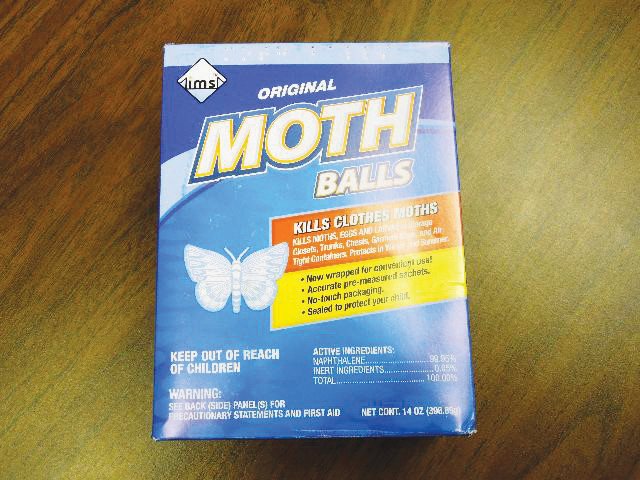The Methodical Misuse of Mothballs
GREEN COVE SPRINGS – Chicken soup is good for a cold, a spoon full of honey helps a sore throat and hundreds more home remedies and treatments have been passed down through our culture.While …
This item is available in full to subscribers.
Attention subscribers
To continue reading, you will need to either log in to your subscriber account, or purchase a new subscription.
If you are a current print subscriber, you can set up a free website account and connect your subscription to it by clicking here.
If you are a digital subscriber with an active, online-only subscription then you already have an account here. Just reset your password if you've not yet logged in to your account on this new site.
Otherwise, click here to view your options for subscribing.
Please log in to continueDon't have an ID?Print subscribersIf you're a print subscriber, but do not yet have an online account, click here to create one. Non-subscribersClick here to see your options for subscribing. Single day passYou also have the option of purchasing 24 hours of access, for $1.00. Click here to purchase a single day pass. |
The Methodical Misuse of Mothballs
GREEN COVE SPRINGS – Chicken soup is good for a cold, a spoon full of honey helps a sore throat and hundreds more home remedies and treatments have been passed down through our culture.
While the true medicinal nature of these are studied and disputed, for some they work and are shared. The same happens in the home and garden and many of these treatments are either inefficient or potentially harmful to your plants, people or the environment.
Probably the biggest standout from these dangerous practices is the use of moth balls.
What are Moth Balls?
Moth balls are a federally-regulated pesticide, for the use of controlling clothes moths and their eggs. That is what the label says; that is the only legal use. Always read the label as it is the law and is there to keep you and others safe. This label will also give you information such as safety, first aid and directions for use.
Most of these labels then state that the products are to be used in sealed containers so vapors do not build up in enclosed spaces such as the home. Why? This is because they will either contain Naphtalene or Paradichlorobenzene, which break down from a solid into a gas, fumigating the area. So what’s the big deal with moth balls under a sink or in the landscape?
Health Effects of Moth Balls
Let’s say you put some moth balls under your sink to repel mice or out in the landscape to keep snakes away, what will happen? As it turns into a vapor in enclosed spaces, Naphtalene can cause nausea, headaches, dizziness and or vomiting. If eaten by children, it can cause diarrhea, fever, abdominal pain and urinary issues while pets can get tremors, nausea, vomiting, lethargy and diarrhea. It can also cause the breakdown of red blood cells in humans if ingested.
Paradichlorobenzene has similar effects, but can the vapors can also inflame eyes and nasal cavities and can cause a burning sensation when handled. Pets will also have similar symptoms but have an additional chance of getting liver and kidney damage.
If a human swallows a mothball, contact the poison control center at 1-800-222-1222 and contact a veterinarian if a pet makes that mistake.
What about wildlife?
You may even find wildlife deterrent products, which are largely ineffective, that contain naphthalene and are labeled for outdoor use to repel wildlife. However, the formulation and strength is different. In the end, any use of a pesticide that is not directly stated on the label is illegal and can be reported by others to the Environmental Protection Agency.
The health effects on wildlife are mostly unknown but both active ingredients are known to potentially harm fish and it is best not to chance them being eaten by other animals.
From now on, use products specifically labeled for the pest you are trying to control and check with your local UF/IFAS Extension Office for details on effective products and methods for controlling animal pests in the home and garden.
If you have any more questions about horticulture, pest control, or need plant or pest materials identified, contact the University of Florida/IFAS Extension Office online at http://www.clay.ifas.ufl.edu, follow us on Facebook, or call by phone at (904)
284-6355.








